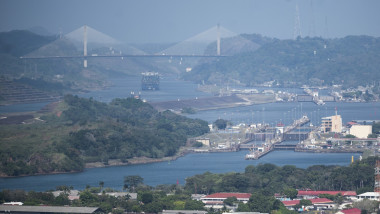A drought has forced authorities to further slash traffic in Panama Canal, disrupting global trade
A severe drought that began last year has forced authorities to slash ship crossings by 36% in the Panama Canal, one of the world’s most important trade routes.
The new cuts announced Wednesday by authorities in Panama are set to deal an even greater economic blow than previously expected.
Canal administrators now estimate that dipping water levels could cost them between $500 million and $700 million in 2024, compared to previous estimates of $200 million.
